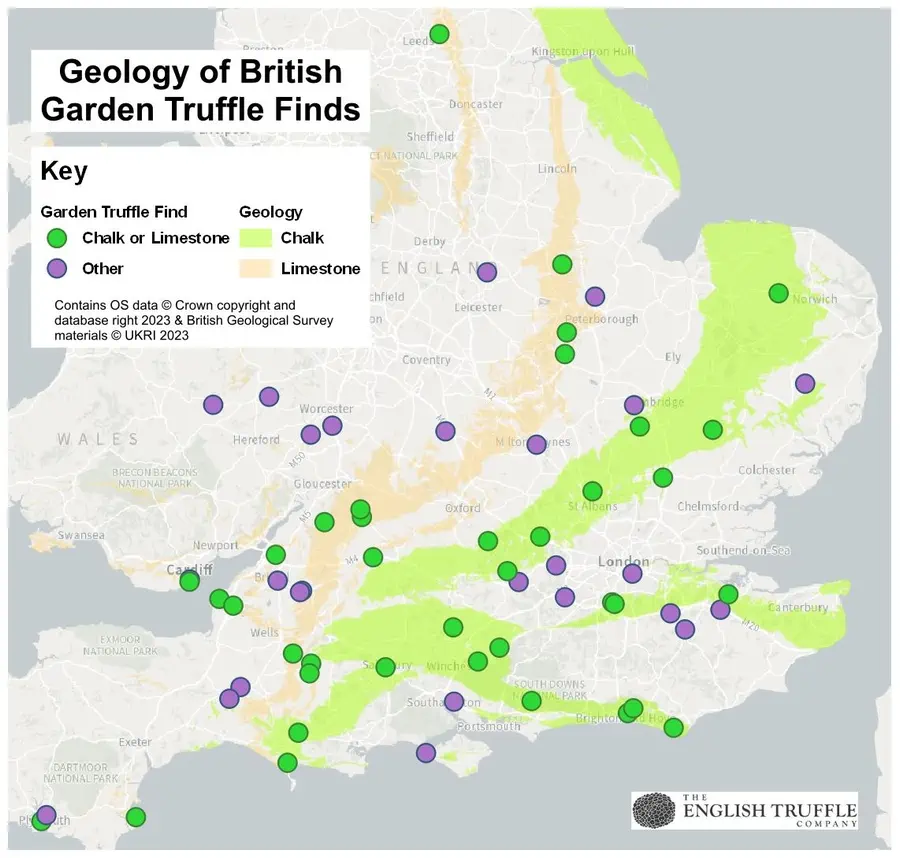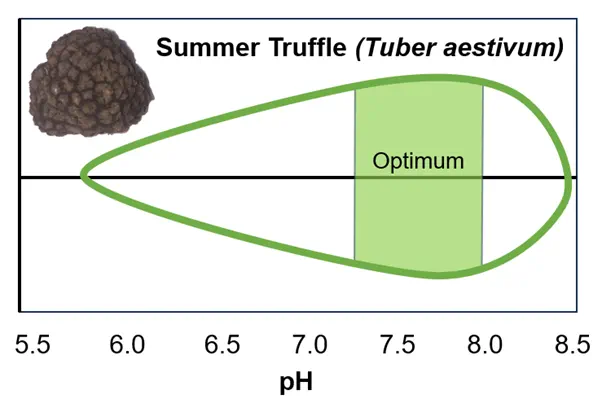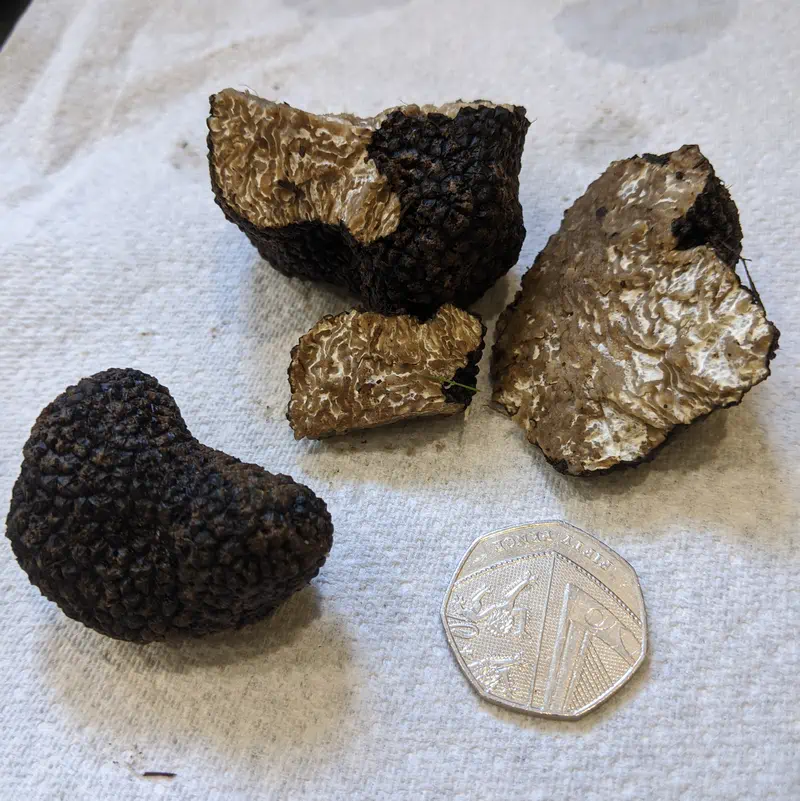We regularly get emails from people that think they have found truffles in their gardens. Often, they are wrong with other fungi like cramp balls, stinkhorn eggs and earthballs among the usual suspects. If the person is correct and the truffles are Summer/Autumn truffles, I ask for a postcode so we can look at soils and geology data to improve understanding of the truffle’s preferences.
Truffles are most commonly found on well drained, alkaline soils over chalk or limestone. The optimum pH for black summer truffles is usually given as between 7.3 – 8.0. I’ve had a run of reports of finds in gardens in unexpected places – outside of areas with chalk or limestone. This did get me thinking so I undertook an analysis of the garden find records I have. The below map shows the results – 61% of these finds from gardens on chalk or limestone and to my surprise, 39% from areas without these bedrock types.

Looking at the literature, the pH range for fruiting within the wild is reported to be primarily 6.8-8.0. They can also be found but less commonly in areas with sub-optimal pH as shown in the below diagram adapted from Truffle Farming Today. A Comprehensive World Guide – Marcos Morcillo, Mónica Sánchez and Xavier Vilanova.

One English study has observed the truffle fungus developing in an area with a soil with a pH of 5.86.
Thinking about a recent garden truffle find, I concluded that a possible explanation for some of these unexpected reports is that when houses are built soil is often brought in from other areas, so they are not growing in the natural soil of an area. Also, builder’s rubble (cement and concrete) contains calcium carbonate which can increase soil pH to high alkaline levels into the desired range for truffles.
I contacted truffle expert Professor Paul Thomas Director of Mycorrhizal Systems and Honorary Professor at the University of Stirling. He too occasionally finds these truffles in places with sub-optimal pH, sometimes really quite low. He supported our explanation and added that many finds that first look unusual can have a local reason identified such as the truffle being found near a path or road that has had calcareous gravel laid.

